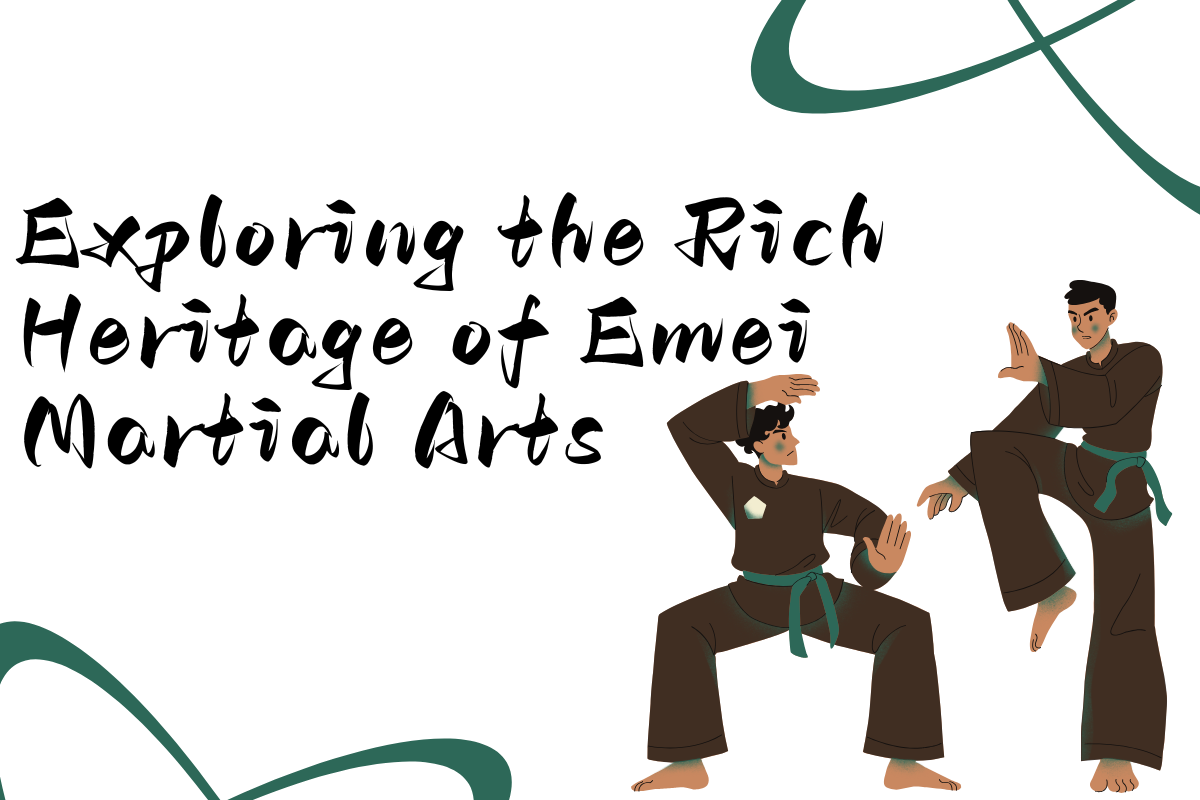Exploring the Rich Heritage of Emei Martial Arts
Emei martial arts 峨眉武术(É méi wǔ shù), shining as a brilliant gem in China's intangible cultural heritage, has a long and distinctive history, leaving a profound mark in the river of Chinese martial arts.
Historical Origins
The origins of Emei martial arts can be traced back to ancient times. According to legend, in the ancient era, Situ Xuan Kong imitated the actions of apes and monkeys, creating the "Emei Monkey Fist," considered the precursor of Emei martial arts with a history spanning over three thousand years. During the Spring and Autumn Period and Warring States Period, Emei martial arts gradually evolved through an amalgamation with folk martial arts in the Ba and Shu regions. Over time, during the Qin and Han dynasties, Emei martial arts incorporated health preservation concepts; in the Tang and Song dynasties, amidst economic and cultural prosperity, martial arts exchanges flourished, enriching and enhancing Emei martial arts. It was during this period that numerous martial arts masters emerged, laying the groundwork for the techniques and theoretical system that would later take shape. In the Ming and Qing dynasties, Emei martial arts reached its pinnacle with numerous schools, diverse forms of fist techniques, and standing alongside Shaolin and Wudang martial arts.

Style Characteristics
Emei martial arts boast a unique style, emphasizing the philosophy of "using softness to overcome hardness and stillness to control motion." Its techniques are diverse and ever-changing, with the concept of "Five Peaks and Six Elbows," where "Five Peaks" refer to head, shoulders, elbows, hips, and knees, and "Six Elbows" denote six elbow techniques. In combat, the strategic combination of hand techniques and elbow strikes enables one to prevail with finesse over brute force. Emei martial arts places importance on body movements such as swallowing, exhaling, floating, sinking, evading, expanding, lifting, and shifting, akin to a lithe dragon, swiftly evading enemy attacks and seizing opportunities for counterattacks. The footwork is nimble and robust, primarily focusing on "rooster steps" and "ding steps," featuring agile and compact movements suitable for executing various techniques. In weapon proficiency, the Emei weapons like Emei Piercer, White Rainbow Sword, and Yumen Boxing Stick are renowned for their unique characteristics, emphasizing the fusion of body and weapon, showcasing graceful and spirited motions 动作(dòng zuò) without sacrificing sharpness.
动作(dòng zuò),noun,motions
Example:
The dancer’s graceful motions captivated the audience.
舞者优雅的动作吸引了观众。
wǔ zhě yōu yǎ de dòng zuò xī yǐn le guān zhòng.
He practiced the motions of the kata repeatedly.
他反复练习空手道的动作。
tā fǎn fù lià nxí kōng shǒu dào de dòng zuò.
Representative Figures
Baiyun Zen Master: A Emei Buddhist monk during the Southern Song Dynasty, he integrated Buddhist Zen meditation with martial arts, creating the "Emei Linji Qigong." This method not only enhances physical well-being but also incorporates unique martial arts principles, exerting a profound influence on the subsequent development of Emei martial arts.
Zhao Kui, Patriarch of the Zhao School: A martial artist 武术家(wǔ sh jiā) during the late Ming Dynasty, his creation of the Zhao School of martial arts stands as a significant lineage within Emei martial arts. Characterized by robust punching techniques and swift leg techniques, his style spread widely in the Sichuan and Chongqing regions, nurturing numerous talented martial artists and making pivotal contributions to the inheritance and development of Emei martial arts.
Modern Martial Artist Wang Jian: Dedicated to the preservation and promotion of Emei martial arts, Wang Jian has spent years researching Emei martial arts techniques and theory. He has won numerous awards in domestic and international martial arts competitions, actively engaging in martial arts teaching activities and nurturing a vast number of outstanding martial artists, injecting new vitality into Emei martial arts in the modern era.
武术家(wǔ sh jiā),noun,Martial Artist
Example:
Bruce Lee was a legendary martial artist.
李小龙是一位传奇的武术家。
lǐ xiǎo lóng shì yī wèi chuán qí de wǔ shù jiā.
The martial artist demonstrated incredible speed and power.
这位武术家展示了惊人的速度和力量。
zhè wèi wǔ shù jiā zhǎn shì le jīng rén de sù dù hé lì liàng.
Inheritance Status and Preservation
Today, the inheritance of Emei martial arts faces certain challenges. With the changing modern lifestyles, the number of young people willing to invest time and effort into learning traditional martial arts is decreasing. However, there are numerous discerning individuals actively engaged in the protection of Emei martial arts. The government has increased support for intangible cultural heritage, implementing policies that encourage the inheritance and development of Emei martial arts. Regular martial arts cultural festivals are held in Emei Mountain and other areas, attracting martial arts enthusiasts from both domestic and international locales, elevating the visibility of Emei martial arts. Schools have also incorporated Emei martial arts into physical education curriculum, nurturing student interest in traditional martial arts from a young age. Martial arts schools and inheritors have utilized online platforms to release instructional videos, disseminating Emei martial arts culture and providing more people with the opportunity to learn about this ancient art, ensuring its continued inheritance and development in the new era, radiating its unique charm.